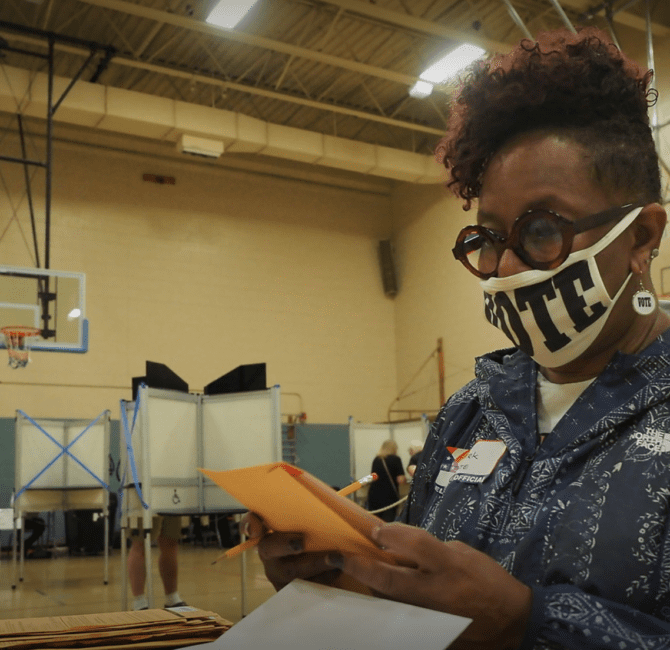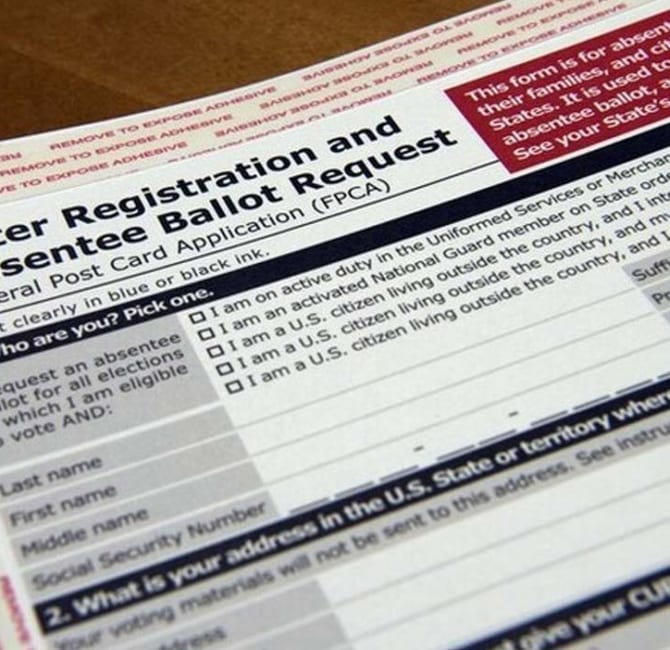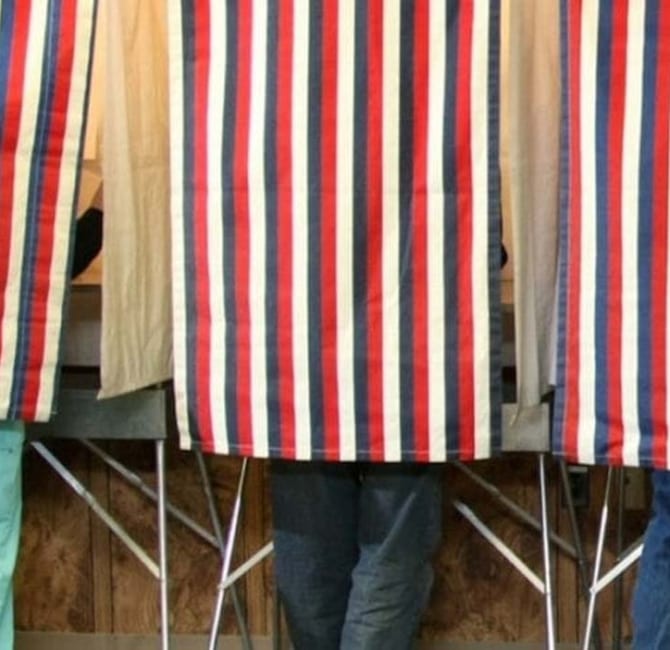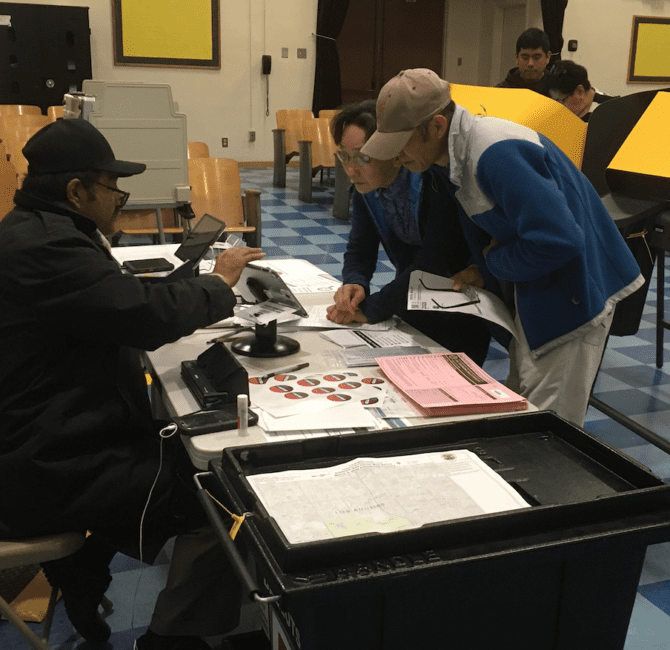The “Surrender Rule.” What is It? Why You Need to Know.
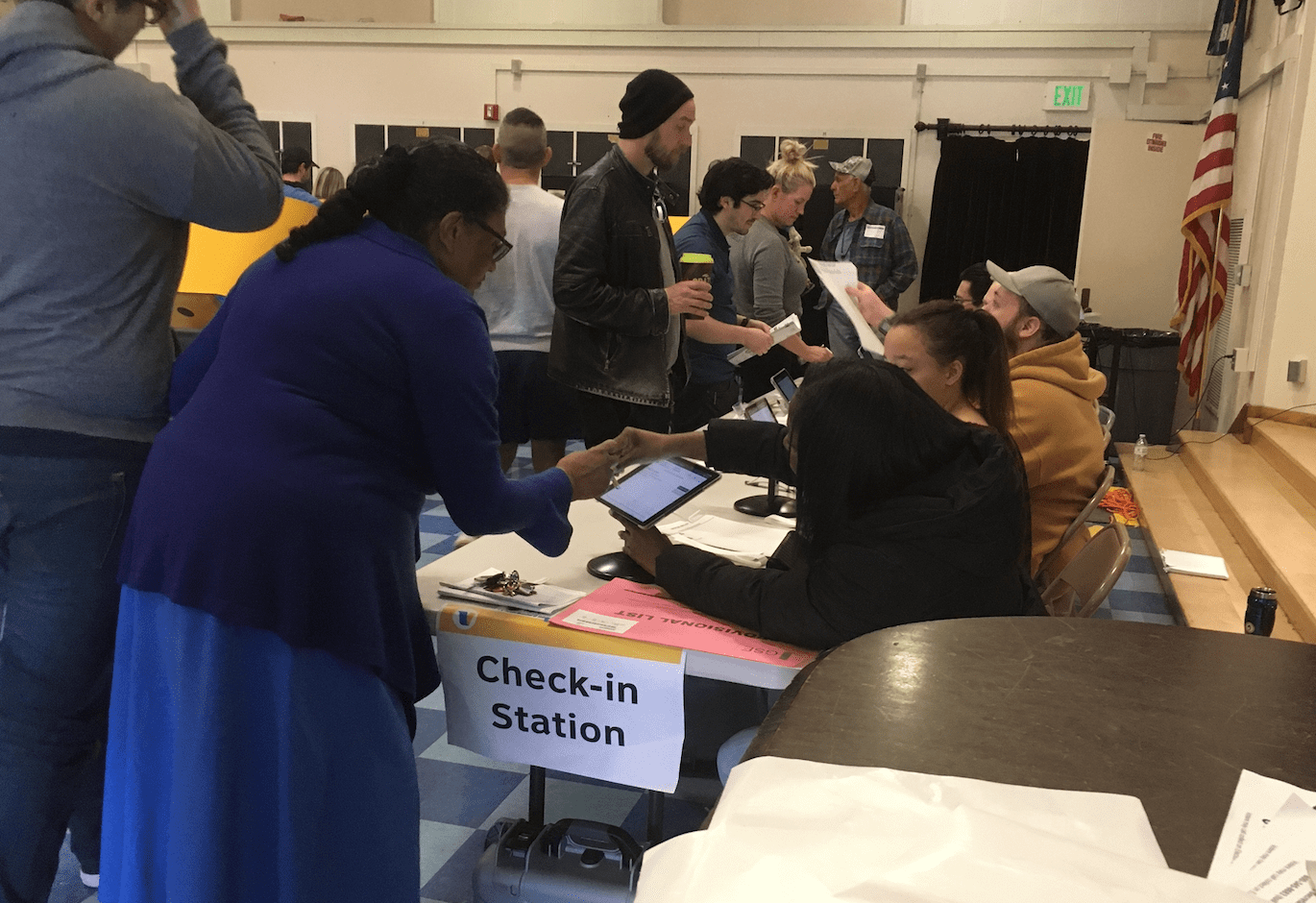
By Steven Rosenfeld and Mimi Kennedy
A troubling pattern has been seen in 2020’s pandemic primaries. Many voters who expected to receive a mail-in ballot never received it. Or it arrived just before Election Day and they worried that it might not get back to the election office by their state’s deadline to count it.
So, in state after state, voters who had requested mail ballots have flocked to polling places to vote in person. Since there were fewer voting sites, due to Covid-19 poll worker shortages, long lines piled up. Voters waited for hours. And then they may have faced another delay, checking in, due to a problem that almost no-one had warned them about.
Their names were listed on the sign-in roster as absentee voters because they’d requested a mailed-out ballot for the election. Thus, in many states, the county (and poll worker) could not automatically let them have a regular in-person ballot. By law, the voters had to be considered as having already received their ballot for this election. They were given a provisional ballot, to be verified at their county election office after most of the other ballots were counted.
What can the voter and poll worker do in this situation? This scenario will expand in the fall due to the expansion of mail voting due to COVID-19.
This moment is covered by what some states informally call the “Surrender Rule.”
The Surrender Rule
In some states, if you did receive your mail ballot but prefer to vote in person, you can surrender—or exchange—your unvoted mail ballot package, envelopes and all, for a regular ballot at an in-person voting site. This can be an Early Voting location or an Election Day polling place. Some states require these voters to show a state-issued photo ID to confirm their identity. (Other states will only give a voter a provisional ballot at this point.)
If you’re you applied for, but didn’t receive, a mailed-out ballot, you have fewer choices. You should go to an in-person site to vote. Bring your ID and ask for a regular ballot. Some states will give it to you. Others will not. If not, you’ll be given a provisional ballot.
What does that mean? You’ll fill out an envelope, sometimes a ballot application form with your voter registration information, and your ballot. After you vote, the ballot will be put into return envelope and set aside to be verified and counted later. If election officials find that no mailed-out ballot was returned in your name, your provisional ballot will be counted, as long as your name, address and signature matches your voter registration.
Election officials typically say a provisional ballot is the fail-safe backup. So why are we urging voters who will experience frustrations with voting by mail to ask for a regular ballot? Because a regular ballot, once cast, is anonymous and automatically counted. Provisional ballot envelopes can be rejected in the election office, far from the voter, over typos and signature mismatches.
Election officials are supposed to contact voters to “cure” problems with the information and signature on ballot envelopes before rejecting those voters. But the election winners and losers may already be decided. They may not reach out, retired officials say. A voter won’t know.
In-person voting locations—Early and on Election Day—are where voters can try to surrender their ballots and get a regular ballot. Early Voting tends to be less busy than Election Day polls. Your state’s “Surrender Rule” or lack of it will govern what kind of fall 2020 ballot you’ll get.
Basics for Voters in 2020
Let’s review basic steps for voting and then return to more nuanced surrender rule scenarios.
Every voter should have a plan to vote this fall. First, they have to be registered as voters. Or they have to make sure that their registration information (name and address) is up to date. Then they have to decide on how they will vote: by mail, Early in-person, or Election Day in-person.
Each of these three choices require knowing either where to go to vote or how to return a mailed-out ballot. Some states let you return voted mail ballots to Early Voting centers, deposit them in drop boxes, or bring them to county offices. Most states, but not all, let you drop off a mailed-out ballot at Election Day polls. Knowing these variables is part of making your plan to vote.
The first step is registering. All states except North Dakota require voters to register. Some do it automatically when you get a driver’s license. The National Association of Secretaries of State has a Can-I-Vote website with links to state and local government election sites. There you can find forms, election office contact numbers, voting sites, ways to check and update your voter registration and ways to apply for an absentee ballot.
Some states let you register and vote at the same time. Twenty states and the District of Columbia have Election Day registration or what’s called Same Day Registration. From west to east, these states are Hawaii, California, Nevada, Idaho, Washington, Utah, Colorado, Wyoming, Montana, Iowa, Minnesota, Illinois, Wisconsin, Michigan, the District of Columbia., Connecticut, Vermont, New Hampshire and Maine. (New Mexico and North Carolina allow voter registration at Early Voting sites, but not on Election Day.)
In some states, Election Day registration is called Conditional Registration. You end up voting what’s called a Conditional Ballot. It’s put into an envelope, but typically counted long before provisional ballots. If you live in one of these same-day states, take a state-issued photo ID with you if you plan to do same-day registration.
Make Sure Your Voter Roll Info is Correct
As a precaution, all voters should go to their county election website—reached via the Can-I-Vote link—to make sure their voter registration information (name, address) is up to date. That step is very important, especially if you want to vote with a mailed-out ballot. Most states are not sending all of their voters a ballot. They are sending an application to vote from home. Others are not sending anything. Either way, your registration file address is how officials find you.
After registration, apply for a mail ballot, just in case COVID-19 forces you to vote at home. Do it early. States have different rules. A few (mostly western) states will send a ballot to all of their “active” registered voters—those who voted recently. So check your registration. If you do not see your name or an “inactive” designation, call your local office to find out how to become an “active” voter. Sometimes updating your registration information or applying for a mailed-out ballot suffices. But be sure.
In the pandemic, many states are making it easier to apply to vote from home. As of mid-July, 22 states have online portals to apply, according to the National Conference of State Legislatures.
Here are links to the state portals that allow voters to find and fill out the forms online: Alaska, Delaware, Florida, Idaho, Louisiana, Maine, Maryland, Michigan, Minnesota, New Mexico, Oklahoma, Pennsylvania, Vermont and Virginia. Other states and Washington, D.C., let you start this process online. But they insist that you download forms, fill out and sign them, and then return them by mail or fax. Yes, that’s more arduous. Links to those states’ portals are here: District of Columbia, Massachusetts, Missouri, North Carolina, North Dakota, Tennessee, West Virginia, Wisconsin, Wyoming.
The Surrender Rule
If applying to vote from home seems too complex, don’t do it. Instead, plan to vote in person early or an Election Day site. During 2020 primaries, thousands of voters wanted to vote from home using mailed-out ballots. But their ballots arrived at the last minute or not at all.
This conundrum brings us back to the Surrender Rule. You’ve gone through all of these steps, yet you never got your ballot. Or it arrived a day or two before Election Day and you don’t dare mail it back, fearing it will fall through the cracks. What should you do?
Let’s review the options. If you have the ballot, take it with you to exchange, unvoted, for a regular ballot. Should your voting location be backed up, consider filling your ballot out if they let you drop it off there. In any case, go vote, even if it’s with a provisional ballot.
There’s a third scenario that was seen in large numbers in the pandemic primaries. Perhaps you mailed back your ballot a few days before Election Day but were worried that it wouldn’t arrive in time. (If it’s been postmarked by the state’s deadline, it should be counted.) Still, many voters went to an Early Voting or Election Day site to cast an in-person ballot.
If you find yourself in that situation, ask the poll workers to check if your mail ballot has—or hasn’t arrived? They may be able to cancel it and let you to vote with a regular ballot. In some states, this is not a problem. If your ballot already was received, you are done. However, in a majority of states, you likely will be given a provisional ballot. Election officials will end up counting the first ballot that arrives and canceling the other one in most states.
Either way, be prepared to meet the Surrender Rule, or the lack of it, if you’re thinking of voting from home this fall. In the spring and summer primaries, tens of thousands of people across the country ran into problems with getting a mailed-out ballot in a timely manner. In many states, election officials dealt with unprecedented volumes of mailed-in ballots. Due to COVID-19, states didn’t train poll workers about many issues, including how to handle voters who had expected to vote from home but showed up at their voting site with a ballot—or no ballot.
In Conclusion
If your mailed-out ballot arrives late or not at all, plan to vote in person. Don’t be surprised. Just do it. If the ballot arrives late, or you do not want to use it, take the ballot, and all its packaging, with you to the voting site. No matter what unfolds – you surrender an unvoted ballot for a regular ballot or fill out that mailed-out ballot and turn it in – you’ll have what you need. If you didn’t get your expected mailed-out ballot at home, grab your photo ID and find an in-person voting location to vote.
In all of these scenarios, don’t give up. The stakes are too high in the 2020 election. The best outcomes depend on high voter turnout and wide margins of victory that cannot be refuted. Voters must plan to vote, follow those plans, and keep going if something goes wrong.



